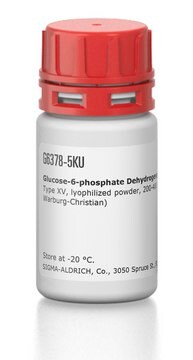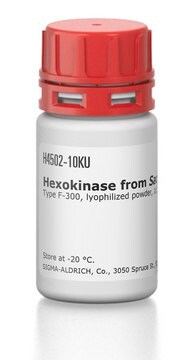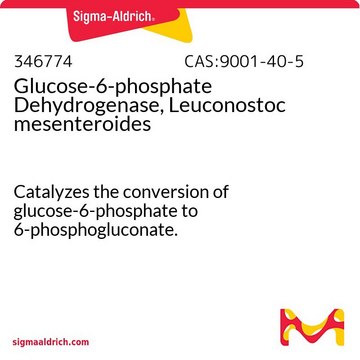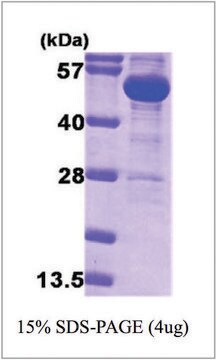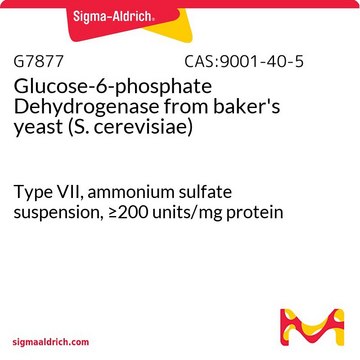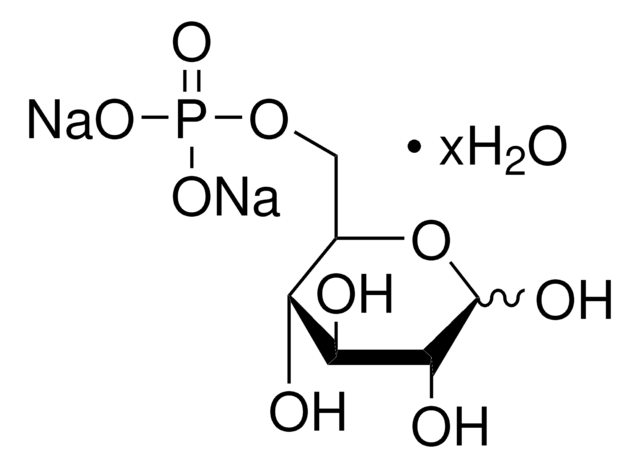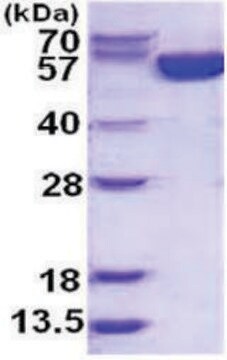G8529
Glucose-6-phosphate Dehydrogenase from Leuconostoc mesenteroides
recombinant, expressed in E. coli, lyophilized powder, ≥550 units/mg protein (biuret)
Synonym(s):
G-6-P-DH
About This Item
Recommended Products
recombinant
expressed in E. coli
Quality Level
form
lyophilized powder
specific activity
≥550 units/mg protein (biuret)
composition
Protein, 10-40% biuret
application(s)
agriculture
foreign activity
creatine phosphokinase, glutathione reductase, myokinase, NADH oxidase, NADPH oxidase, phosphoglucomutase, 6-phosphogluconic dehydrogenase, phosphoglucose isomerase, lactic dehydrogenase, hexokinase ≤0.01%
storage temp.
2-8°C
Looking for similar products? Visit Product Comparison Guide
Application
- in the coupled spectrophotometric assay for PGI (F6P to G6P reaction)
- to study the starch time course using Nicotiana tabacum leaves
- to determine the glucose content in the root and stem samples of Quercus velutina Lam. saplings
- to assay glucose using a starch sample of wild-type and transgenic Arabidopsis whole seedlings
Biochem/physiol Actions
Unit Definition
Physical form
Storage Class
11 - Combustible Solids
wgk_germany
WGK 3
flash_point_f
Not applicable
flash_point_c
Not applicable
ppe
dust mask type N95 (US), Eyeshields, Gloves
Choose from one of the most recent versions:
Already Own This Product?
Find documentation for the products that you have recently purchased in the Document Library.
Customers Also Viewed
Protocols
Enzymatic Assay of Glucose-6-Phosphate Dehydrogenase (EC 1.1.1.49)
Our team of scientists has experience in all areas of research including Life Science, Material Science, Chemical Synthesis, Chromatography, Analytical and many others.
Contact Technical Service
